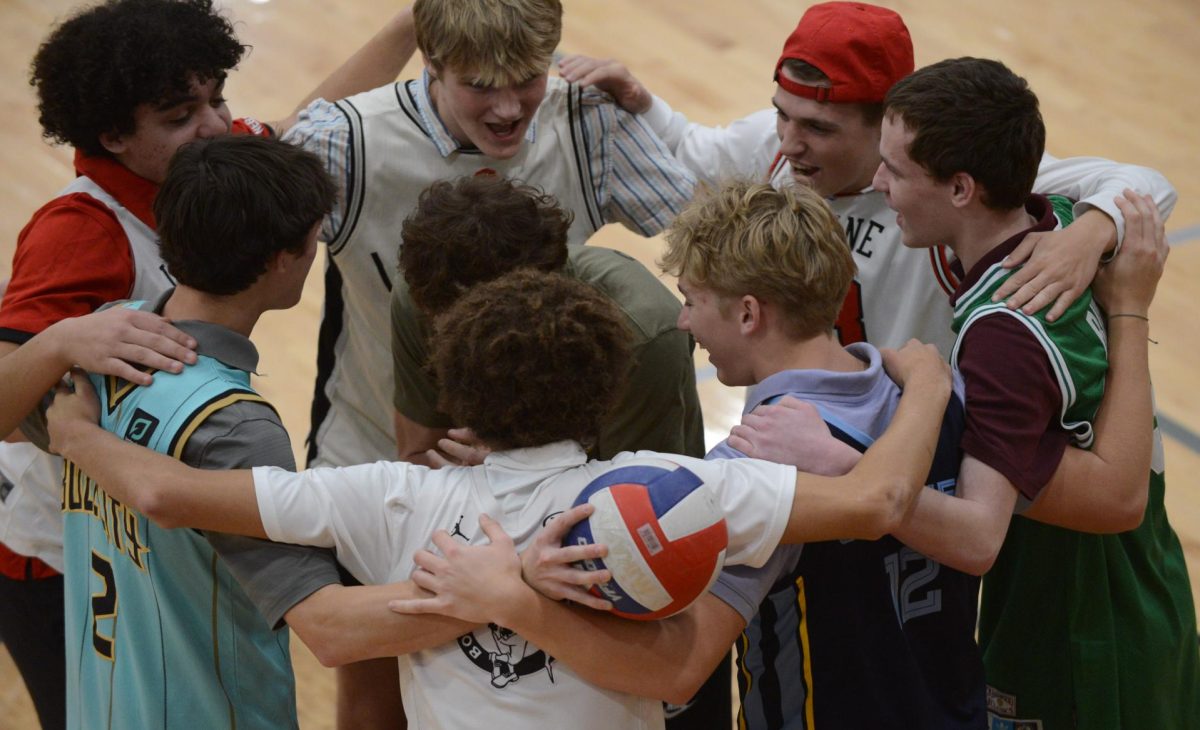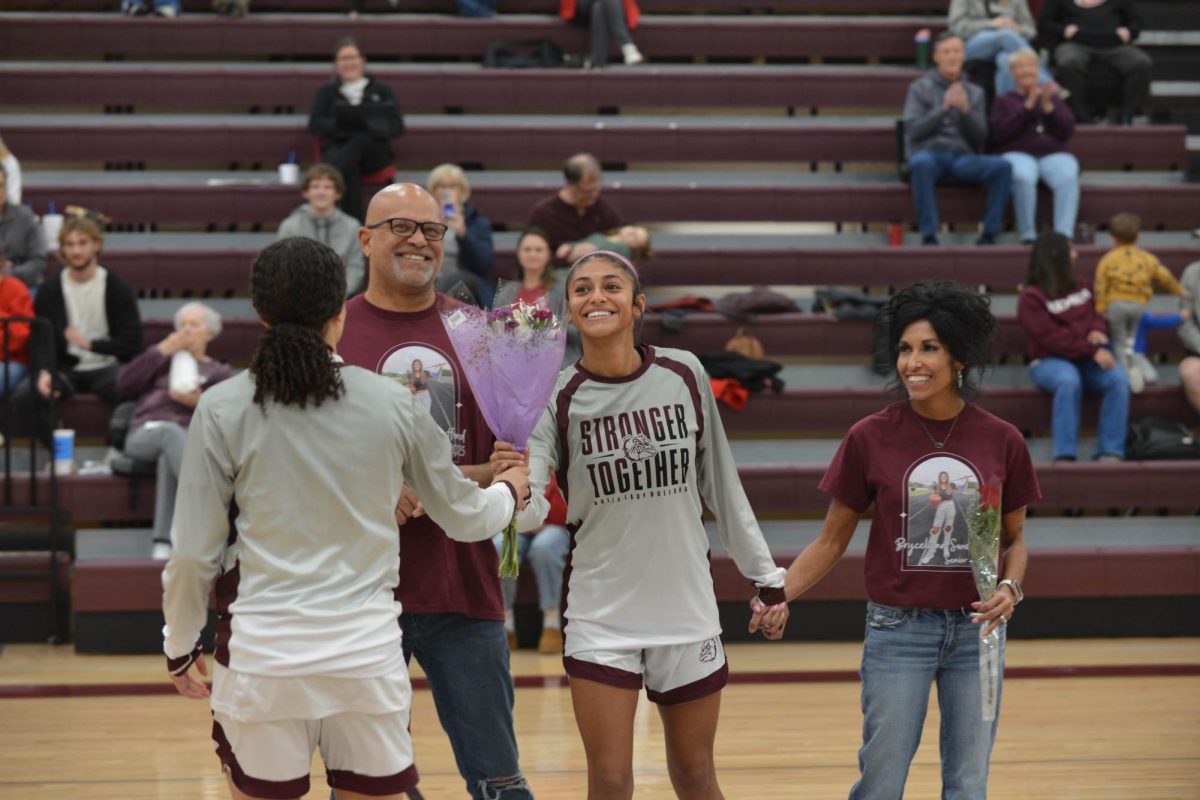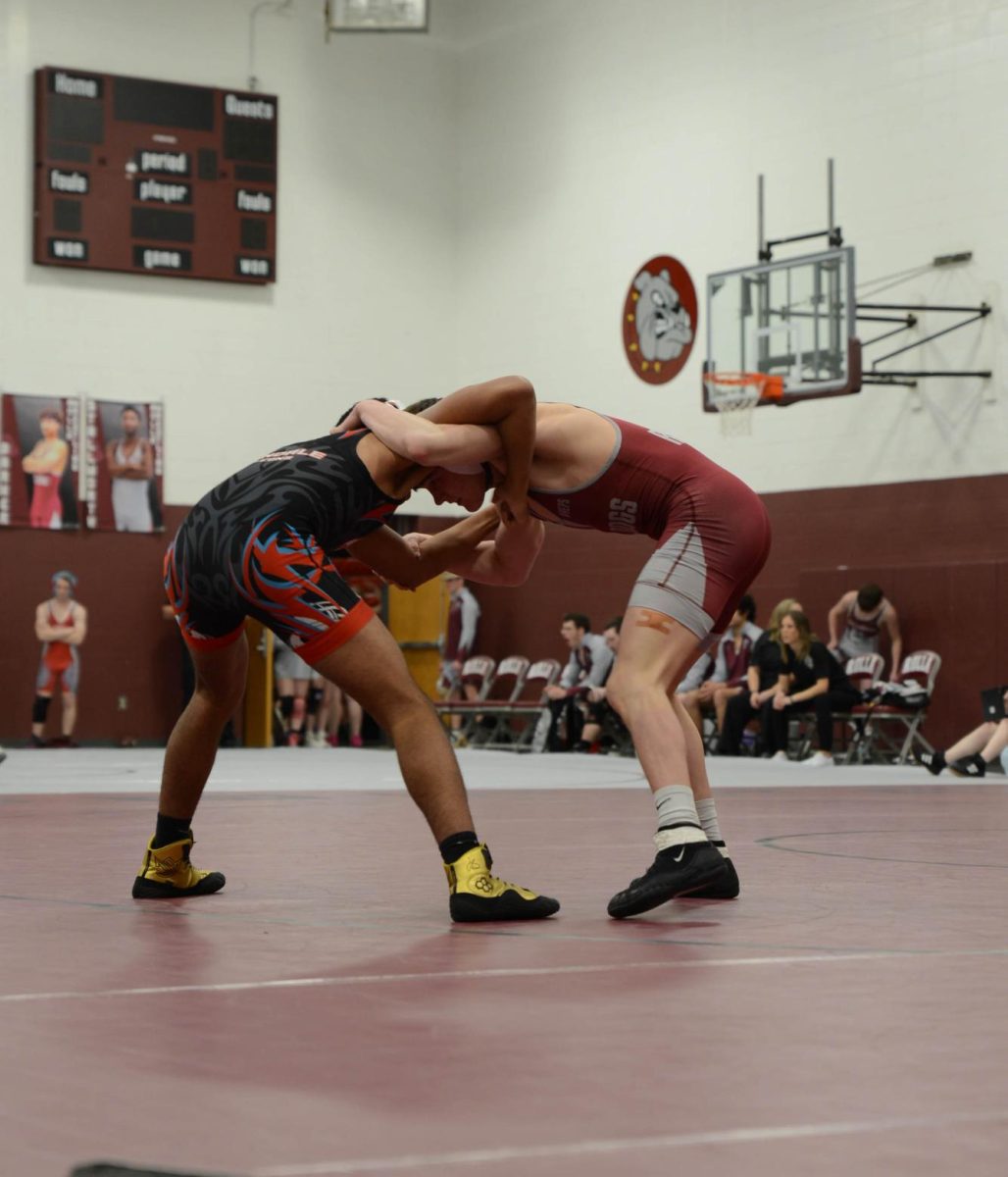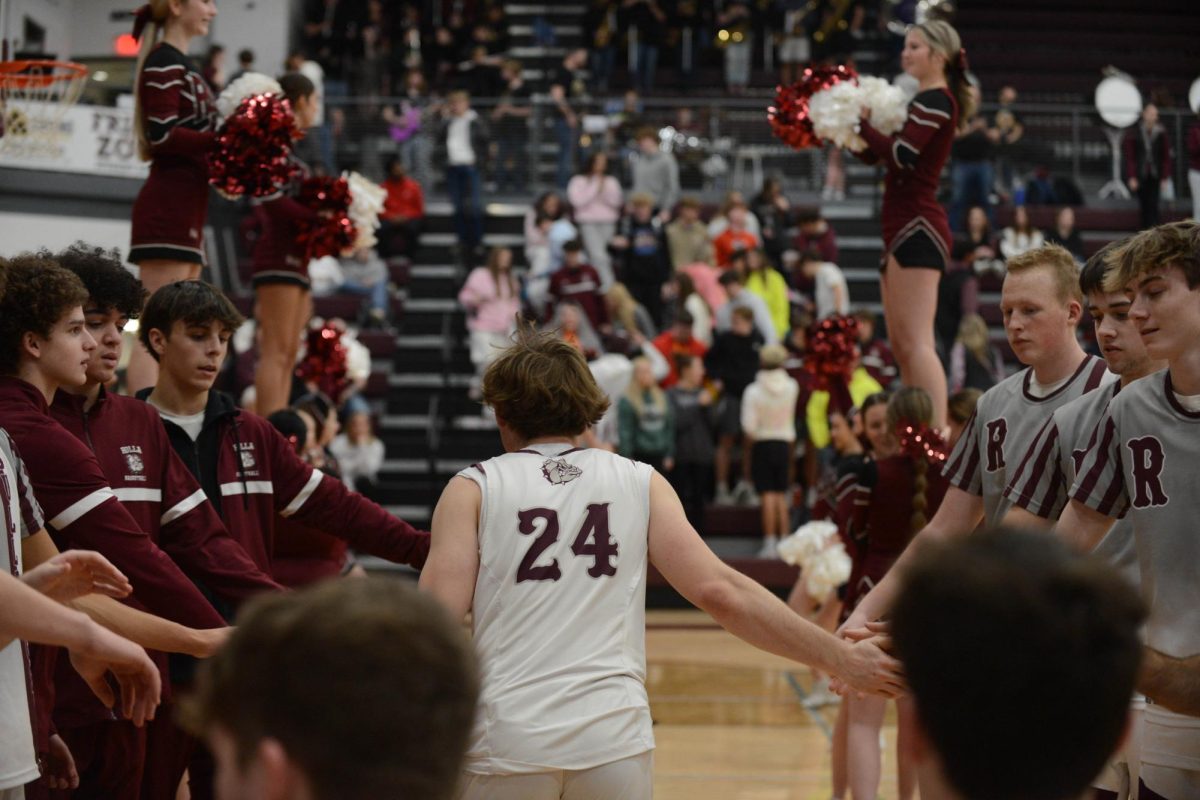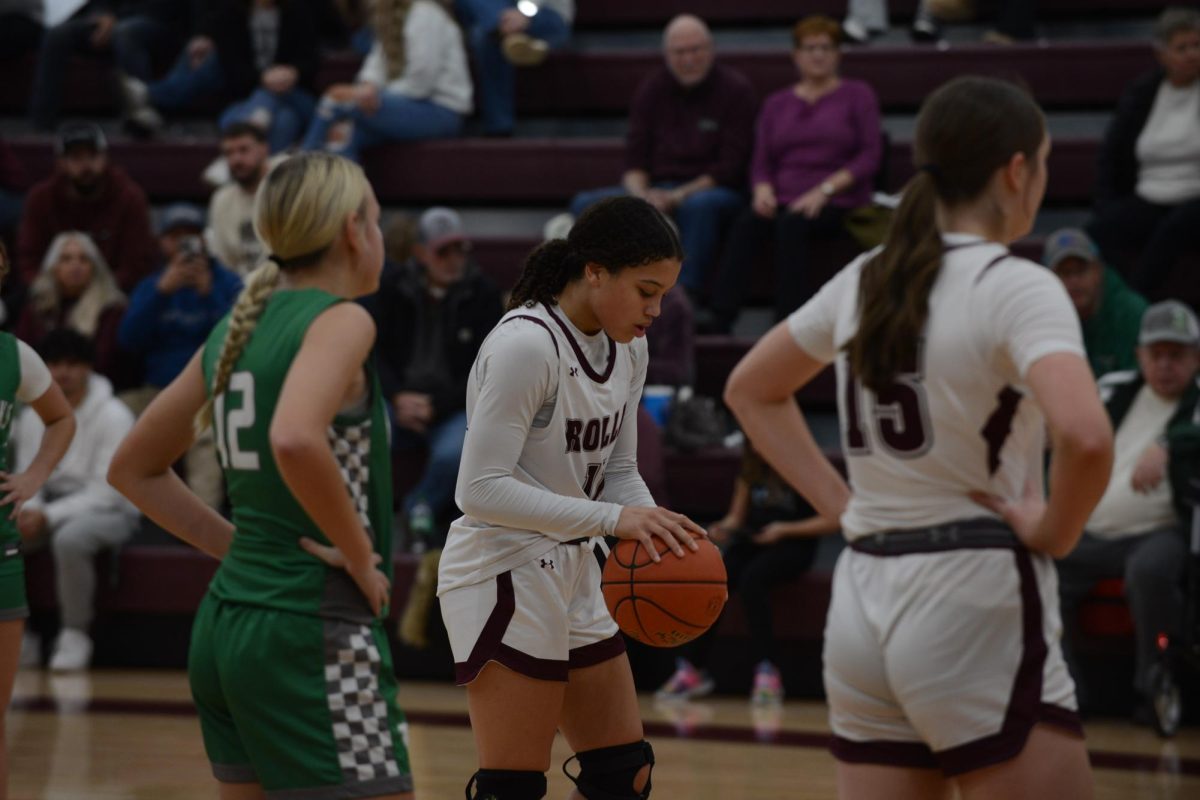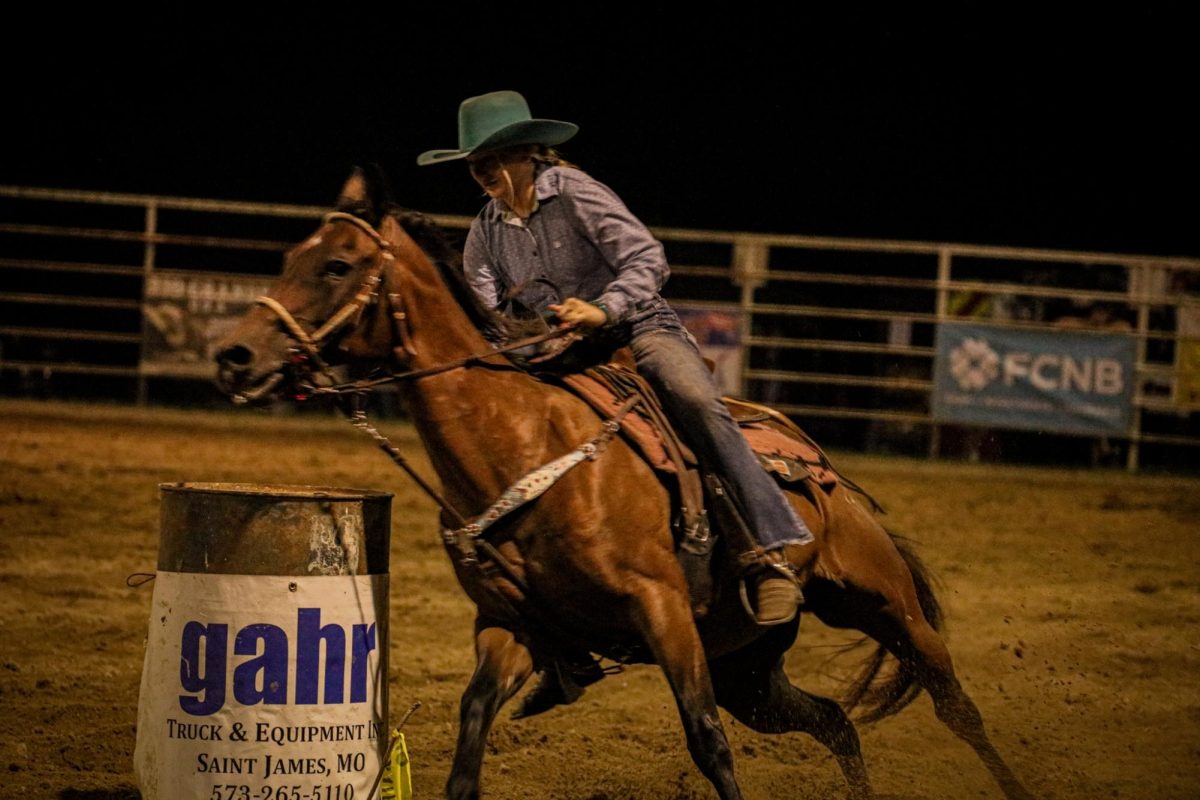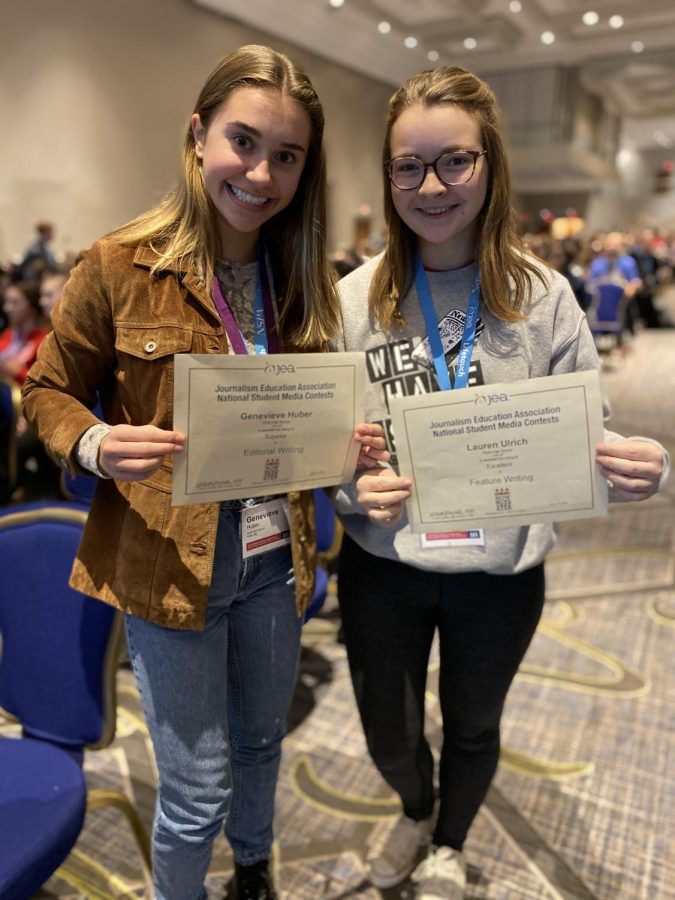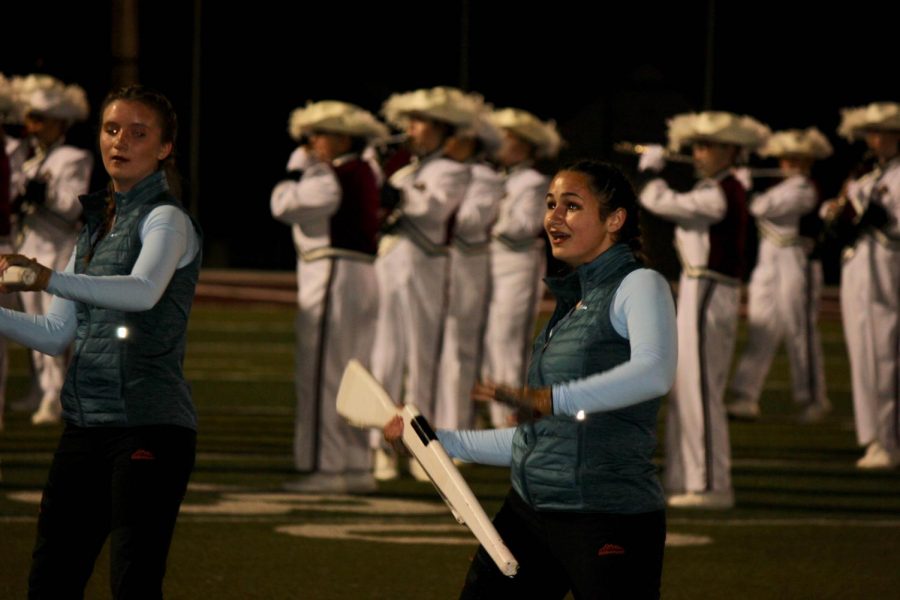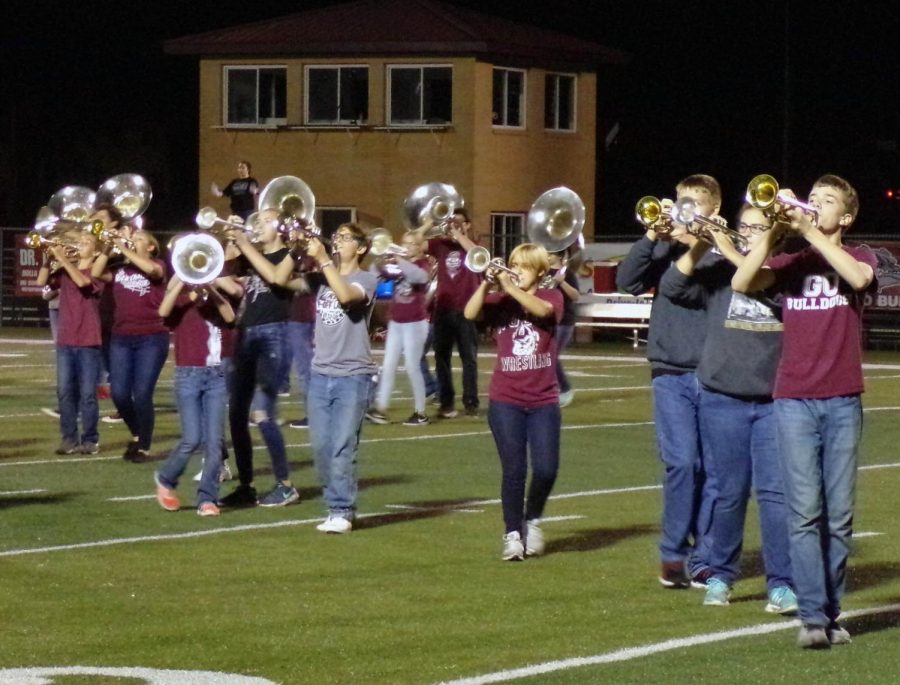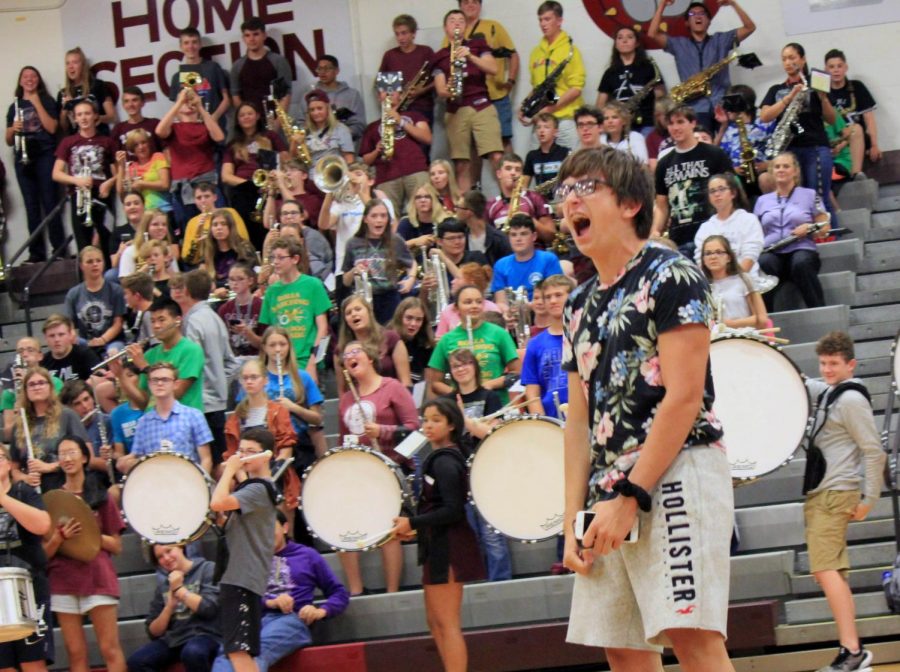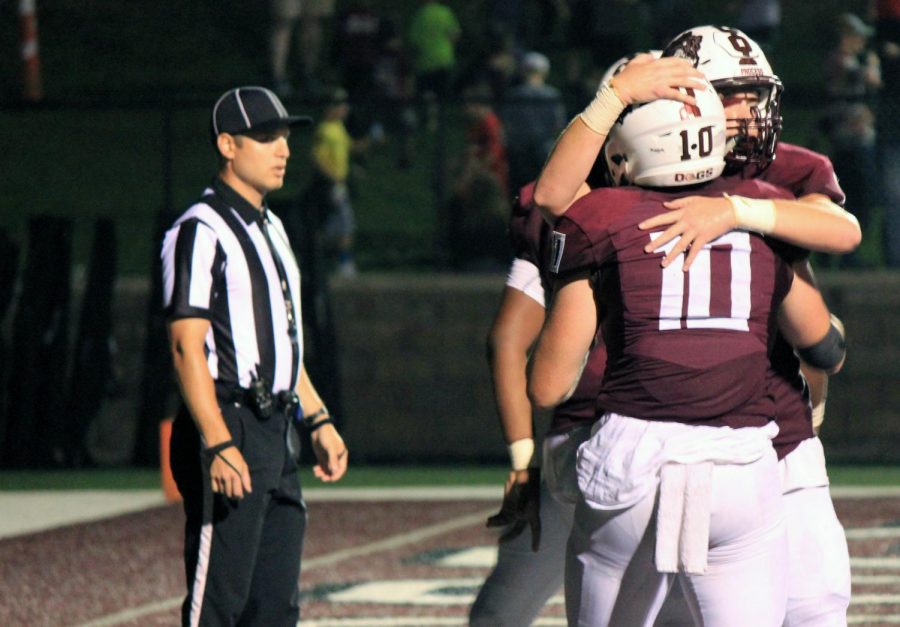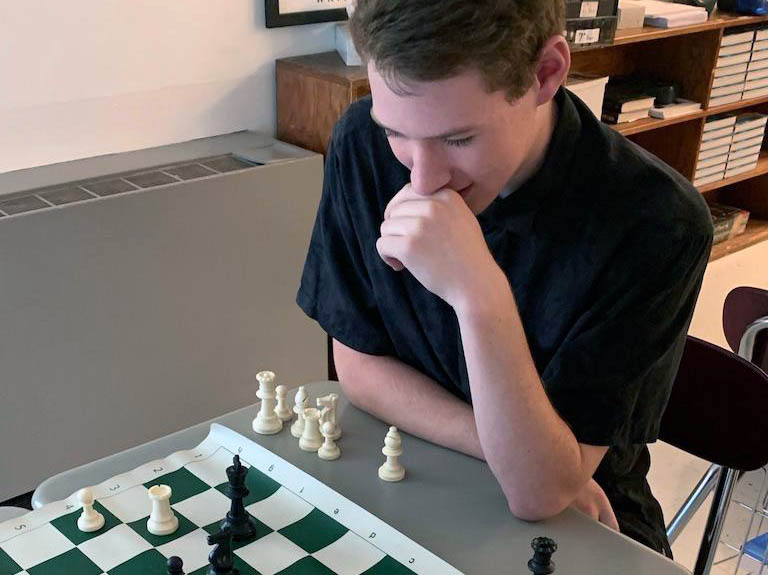Scholastic wrestling, sometimes known as folkstyle wrestling, is a style of amateur wrestling practiced at high school and middle school levels in the United States. This wrestling style is essentially collegiate wrestling with some slight modifications. When practiced by wrestling clubs of younger participants, scholastic wrestling is better known as “folkstyle.” Starting at such a young age and using the same style helps wrestlers perfect it over time and can learn to love the sport.
“I wrestle because it’s a very individual sport, and I like the feeling of my hand being raised after every match and knowing that all the effort that I put in pays off in the end,” senior Thomas Ceja said. “I’ve been wrestling for nine years; I started at kids club here at Rolla and have kept at it all the way through high school.”
Leadership and commitment at are not to be slacked off throughout this team of about 25. Their coach has been involved with the team since the 90’s.
“What my whole philosophy is to help boys become men through wrestling, and it’s an individual sport which I like. You’re the only one out there, only you get the glory, but you’re the only one who gets beat down in front of everyone. It takes a lot of courage to get out on the wrestling mat in front of everyone, and a lot of people can’t do that.” coach Mark Sells said.
Wrestling is not only a physical sport but a mental sport. One is put on the spot and must be able to focus on the next move, rather than the crowd, and must take strong leadership and commitment to overcome it.
“For leadership on the team I guess you could say I look up to Coach because I have the most experience in the room, and I went to state last year. Other than coach people look up to me for leadership on the team,” Ceja said.
Also in high school wrestling there are 14 max weight classes (106, 113, 120, 126, 132, 138, 145, 152, 160, 170, 182, 195, 220, 285). This means that if a wrestler weighs 114 pounds they would have to wrestle in the 120 weight class. So you want to be as strong as possible and also as light as possible to beat your opponent.
“The main objective is to pin your opponent [‘s] shoulders down on the mat for two seconds then the match is over. You could be losing in points, but like in boxing [you can] get a knock out to win. It’s the same thing with a pin, but you can also win on points by gaining control, getting away from control, take downs, a lot of points from a near fall which is getting their back to the mat,” Sells said.
Getting points and pins help win meets, but experience is needed to get the points and pins necessary.
“This season we don’t have a lot of numbers out, and we don’t have a lot of experience on the varsity level in open weight class. We don’t fill every weight. We had some meets where we did fill all of varsity, but because of injury we haven’t been able to now. [It] could be going better, but were getting better as the season goes on,” Sells said.



